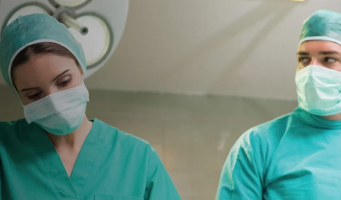Anaesthesia Fundamentals | Anatomy | Boney Orbit and Extraocular Contents



Boney Orbit and Extraocular Contents
Session Overview
Description
Applied anatomy of the orbit and its extraocular contents.
Learning Objectives
By the end of this session you will be able to:
- Identify the bones that comprise the orbit and locate them on the skull
- Describe the three-dimensional space within the orbit and its basic geometry
- List the contents of the orbit
- Specify the origin, insertion and function of the extraocular muscles
- Describe the relationship of Tenon’s fascia to the globe of the eye
Recent trends have moved increasingly toward the use of regional techniques for the provision of effective anaesthesia for intraocular surgery.
Knowledge of the anatomy of the orbit and its contents is essential for the safe and successful practice of orbital regional anaesthesia.
In this session you will learn about the bones and three-dimensional space that comprise the orbit. You will also learn about the extraocular muscles that form the muscle cone and see how they work. Knowledge of the muscle cone will facilitate the practice of peribulbar and retrobulbar block.
Finally, you will see how Tenon’s fascia envelops the eye. Knowledge of Tenon’s fascia will facilitate the practice of sub-Tenon’s block.
- Anaesthesia Fundamentals | Physiology | Ventilatio...
- Posted By eIntegrity Healthcare e-Learning
- Posted Date: 2024-12-26
- Location:Online
- This session describes how and why ventilation and perfusion vary in the healthy lung. Causes of hypoxia, such as hypoventilation, increased dead space and shunt, are discussed to help the trainee explain and manage hypoxia clinically.
- Anaesthesia Fundamentals | Physiology | Pulmonary ...
- Posted By eIntegrity Healthcare e-Learning
- Posted Date: 2024-12-26
- Location:Online
- This session covers the measurement and clinical importance of lung volumes, including functional residual capacity and dead space. Information regarding the performance and interpretation of flow-volume loops is also included.
- Anaesthesia Fundamentals | Physiology | Co2 Carria...
- Posted By eIntegrity Healthcare e-Learning
- Posted Date: 2024-12-26
- Location:Online
- This session covers the physiology of how carbon dioxide is carried by blood, including its conversion into bicarbonate ions and the role of the red blood cell and haemoglobin in this process. The session also describes how buffers work, and the fundament
- Anaesthesia Fundamentals | Physiology | Function o...
- Posted By eIntegrity Healthcare e-Learning
- Posted Date: 2024-12-26
- Location:Online
- This session focusses on the function of haemoglobin in oxygen (O2) carriage from the lungs to other tissues where cells are supplied with the O2 required for oxidative phosphorylation in the mitochondria. We will cover the structure
- Anaesthesia Fundamentals | Physiology | Gaseous Ex...
- Posted By eIntegrity Healthcare e-Learning
- Posted Date: 2024-12-26
- Location:Online
- This session will introduce you to the physiological effects of altitude and the adaptations that occur with acclimatization. It also introduces the pathology and physiology of high pressure and decompression.


